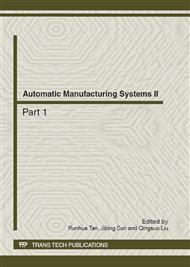p.1222
p.1227
p.1231
p.1238
p.1242
p.1251
p.1260
p.1264
p.1268
Calculation of Single Conductor Capacitance by Estimating the Electrostatic Field
Abstract:
The capacitance between two terminals of a single conductor working with time-dependent signals is defined by the amount of energy stored in the electric field outside the conductor. A simple approach for calculating the capacitance is presented in this paper, which only needs the computation of an electrostatic field. The approach is derived based on two assumptions, (1) the distribution of potentials on the conductor surface is almost the same, created by a time-dependent current and a direct current flowing in the conductor, (2) the distribution of the potential created by a direct current in the conductor can be modeled by an electrostatic field, in which the conductor is replaced by a dielectric with high permittivity. The approach is only suitable for low-frequency situations, where the displacement current and the inductive electric field can be disregarded.
Info:
Periodical:
Pages:
1242-1247
Citation:
Online since:
June 2012
Authors:
Price:
Сopyright:
© 2012 Trans Tech Publications Ltd. All Rights Reserved
Share:
Citation:


